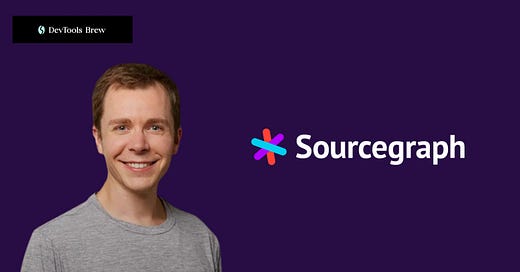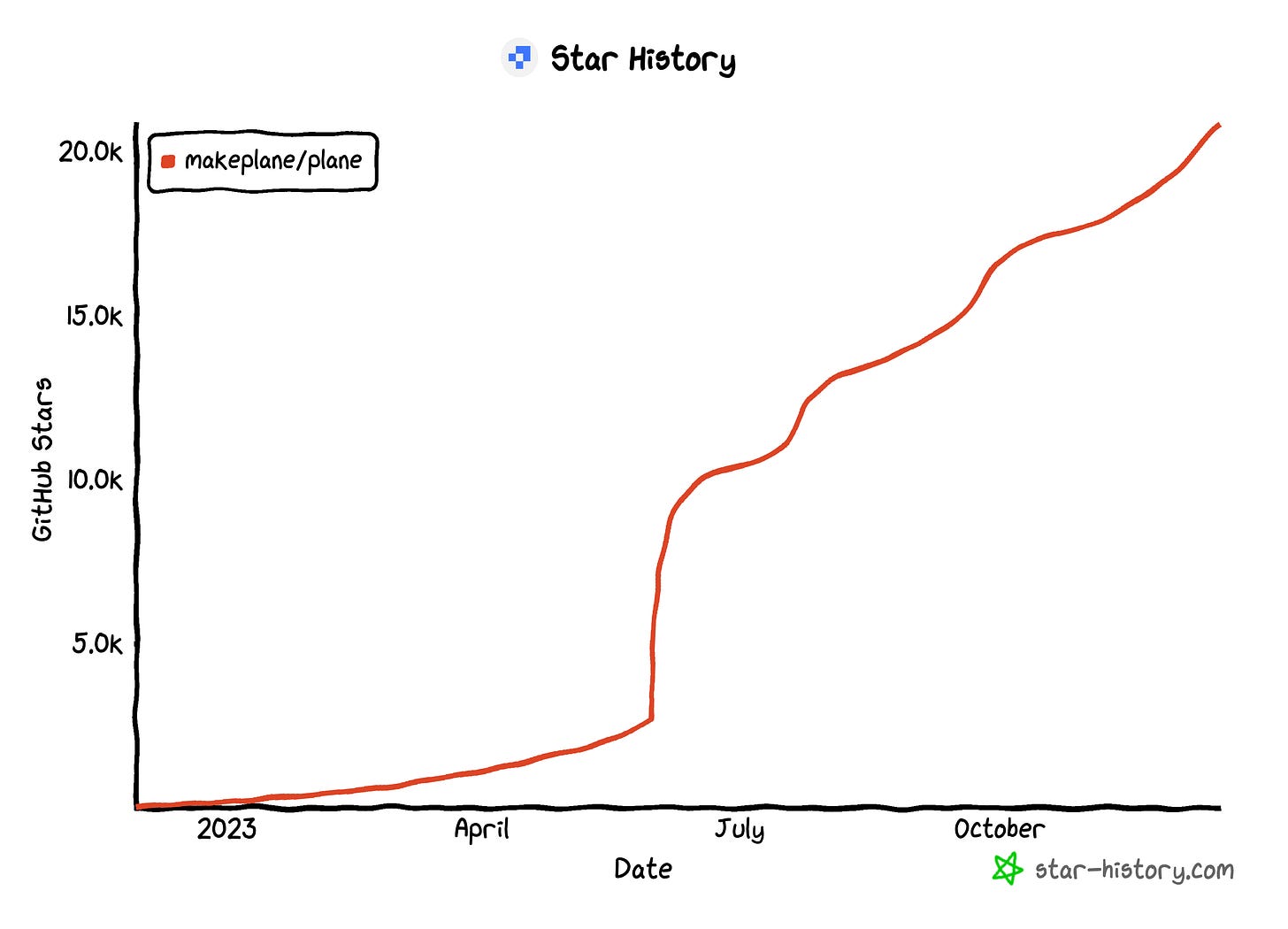DevTools Brew #42: Decoding Sourcegraph’s Journey: Building Developer Trust
Hey folks, welcome to DevTools Brew #42!
If you're new here, my name is Morgan Perry, co-founder of Qovery, and every Saturday, I share the stories, strategies, and insights behind the most successful devtool companies.
In this Issue #42:
📈 Decoding Sourcegraph’s Journey: Building Developer Trust
⭐ Star History Weekly Pick
I hope you will enjoy this new edition.
Let's dive in!
📈 Decoding Sourcegraph’s Journey: Building Developer Trust
For this last issue of 2023, let’s uncover Sourcegraph's journey, exploring the evolution of code search and its profound impact on developers and companies alike. Quinn Slack, the CEO and Co-Founder of Sourcegraph unveils key insights and pivotal moments in this conversation, shedding light on their approach, challenges, and the profound effect of transparency on building trust in the developer community.👇
Key Insights
Sourcegraph's Genesis: From Public Code Search to a Company-focused Product
Origin Story: Sourcegraph initiated its journey by introducing a product focused on public code search across repositories, later pivoting to internal code search within companies for enhanced efficiency.
Google's Influence: Drawing inspiration from Google's robust internal tooling, Sourcegraph aspired to provide a similarly high-quality code search tool accessible to companies of all sizes.
Trust-Building Culture: The company's ethos revolves around establishing trust, reflected in their publicly available employee handbook and the way they shape and approach product development.
Understanding the Code Search Landscape
Pre-Sourcegraph Tools: Prior to Sourcegraph, existing tools like OpenGrok, Hound, and Livegrep existed but lacked the comprehensive quality and sophistication of Google's internal code search tool.
Google & Facebook's Tools: Both Google and Facebook possessed renowned internal code search tools, yet these were not open-sourced due to the specialized nature of their codebase and unique functionalities.
Code Search Dynamics: Recognizing the distinct nature of code search for company-specific codebases, Sourcegraph dedicated efforts to refining and tailoring their product for this specific niche.
Journey to Open Source & Trust Building
Strategic Shift: Transitioning from a cloud service to self-hosted solutions, Sourcegraph aimed to instill trust by enabling users to run code search on their own networks, increasing control and privacy.
Open Source Milestone: The decision to go open source was monumental, yet the subsequent impact on developer trust was less seismic than initially anticipated, emphasizing the subtleties in community perception.
Licensing Strategy: Opting for Apache 2 licensing to ensure broad acceptance, Sourcegraph cleverly demarcated open-source from enterprise code within the same repository, offering transparency in code usage.
Impact of Open Source and Marketing Insights
Marketing Implications: Despite the move to open source, the direct impact on marketing endeavors remained relatively limited, with the primary focus continuing to be the value proposition of code search.
End-User Application Dynamics: Differentiating Sourcegraph as an end-user application revealed that the significance of open source for discovery was less pronounced compared to libraries or APIs, altering the dynamics of visibility.
Visibility & Validation: While the open-source status acted as a validator, bolstering credibility, its direct effect on attracting traffic or facilitating discovery showcased nuanced impacts within the developer ecosystem.
Community Contributions: Expectations and Realities
Open-Source Enthusiasm: Quinn notes that opening Sourcegraph up to the community initially had no expectations of external contributions, viewing any such contributions as a bonus.
Customer Engagement: While external contributions were not the primary anticipation, Sourcegraph found immense value in customer-reported issues, establishing a transparent feedback loop and bolstering trust among users.
End-User Application Dynamics: Quinn highlights the challenges faced by end-user applications in garnering significant external contributions compared to tools or libraries, reflecting a trend of fewer contributions.
Strategic Decisions: Open Source and Self-Hosted Simplicity
Philosophy of Simplicity: Quinn emphasizes Sourcegraph's principle of mirroring the delivery of open-source tools, aiming to minimize reliance on complex deployment mechanisms, relying primarily on Postgres, Redis, and simplified deployment structures.
Scaling and Performance: Addressing stringent performance requirements, Sourcegraph caters to customers with massive codebases, understanding the scaling challenges unique to self-hosted single-tenant solutions.
Shifting Philosophies: The philosophy of keeping dependencies minimal and aligned with the open-source ethos was a pre-existing ideology, with minimal adjustments required upon Sourcegraph's code opening.
Navigating Proprietary Features and Community Trust
Deciding Proprietary vs. Public: Sourcegraph navigates the proprietary-public divide by weighing feature importance to larger enterprises against individual developer utility, often seeking to provide enterprise-specific functionalities.
Community Understanding: Quinn notes that while decisions on proprietary aspects aren't without contention, the majority of the community comprehends the complex nature of such choices and trusts the company's vision.
Challenges with Proprietary Elements: Discussing concerns about forking repositories and potential legal intricacies, Sourcegraph grapples with balancing public versus private code complexities.
Product Direction, and Incremental Gains
Usage Tracking: Sourcegraph uses telemetry for enterprise versions but refrains from extensive tracking for the open-source variant, assuming a lower adoption rate due to enterprise features.
Product Focus: Quinn highlights Sourcegraph's relentless focus on building tools universally useful to developers in all companies, thereby shaping the product roadmap around universal applicability and daily usage.
Unexpected Popularity: While no single feature stood out remarkably, Sourcegraph's incremental improvements, especially in aspects like color themes, query auto-completion, and speed enhancements, have been pivotal.
Quinn Slack's profound insights into Sourcegraph's journey offer a glimpse into the delicate balance between open-source ethos, proprietary necessities, and the perpetual quest for universally indispensable tooling.
—> To explore more, read the full story here - published initially by FlagSmith
⭐ Star History Weekly Pick
The Star History Weekly Pick is:
Plane: “Open Source JIRA, Linear and Height Alternative. Plane helps you track your issues, epics, and product roadmaps in the simplest way possible.”
⭐️ 20.8k stars reached
It’s already over! If you have any comments or feedback, you can reach out to me on LinkedIn or Twitter.
Thanks for reading,
Morgan
There are no ads in my newsletter. All I ask is you subscribe, share, and enjoy! :)





